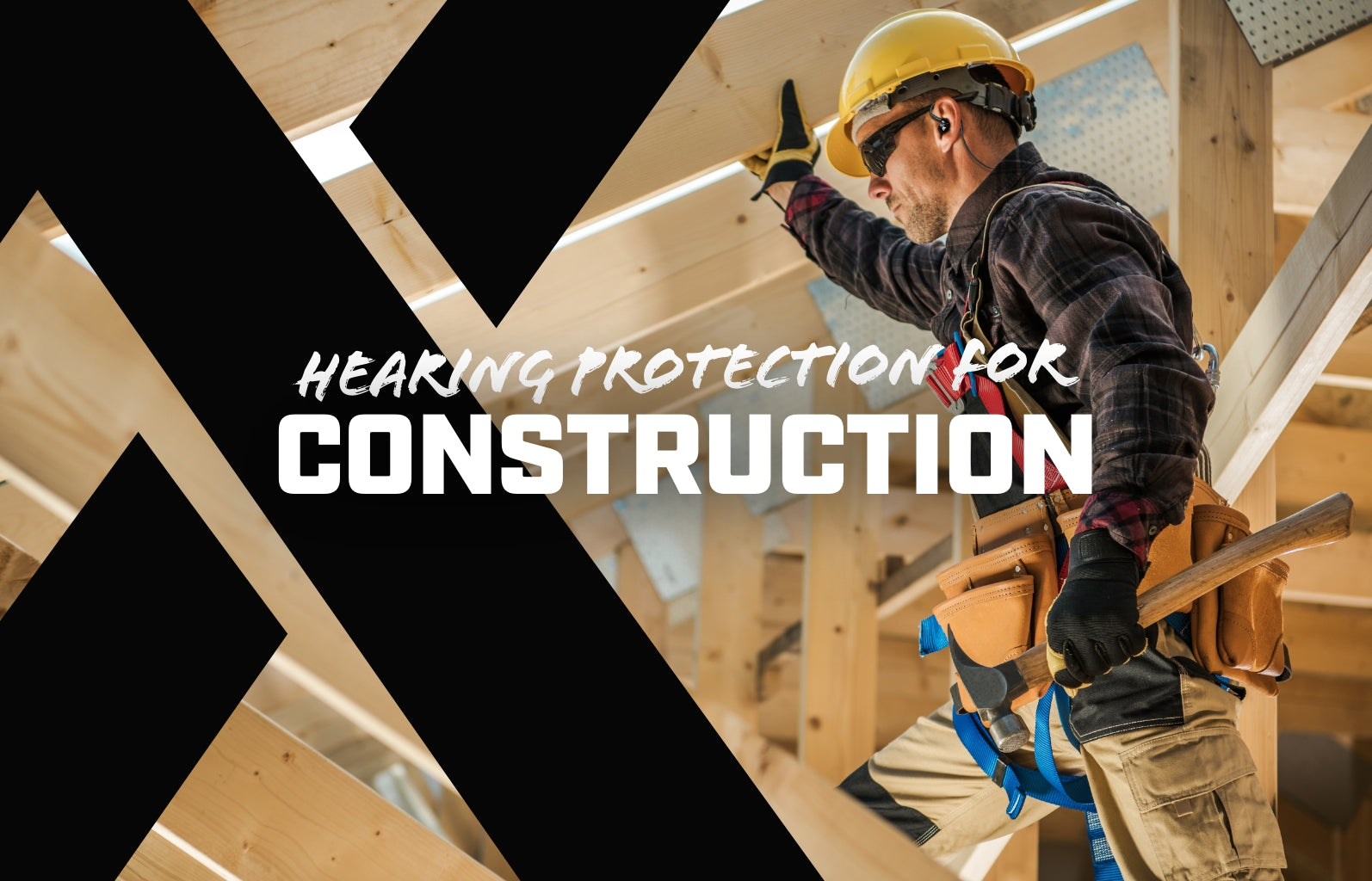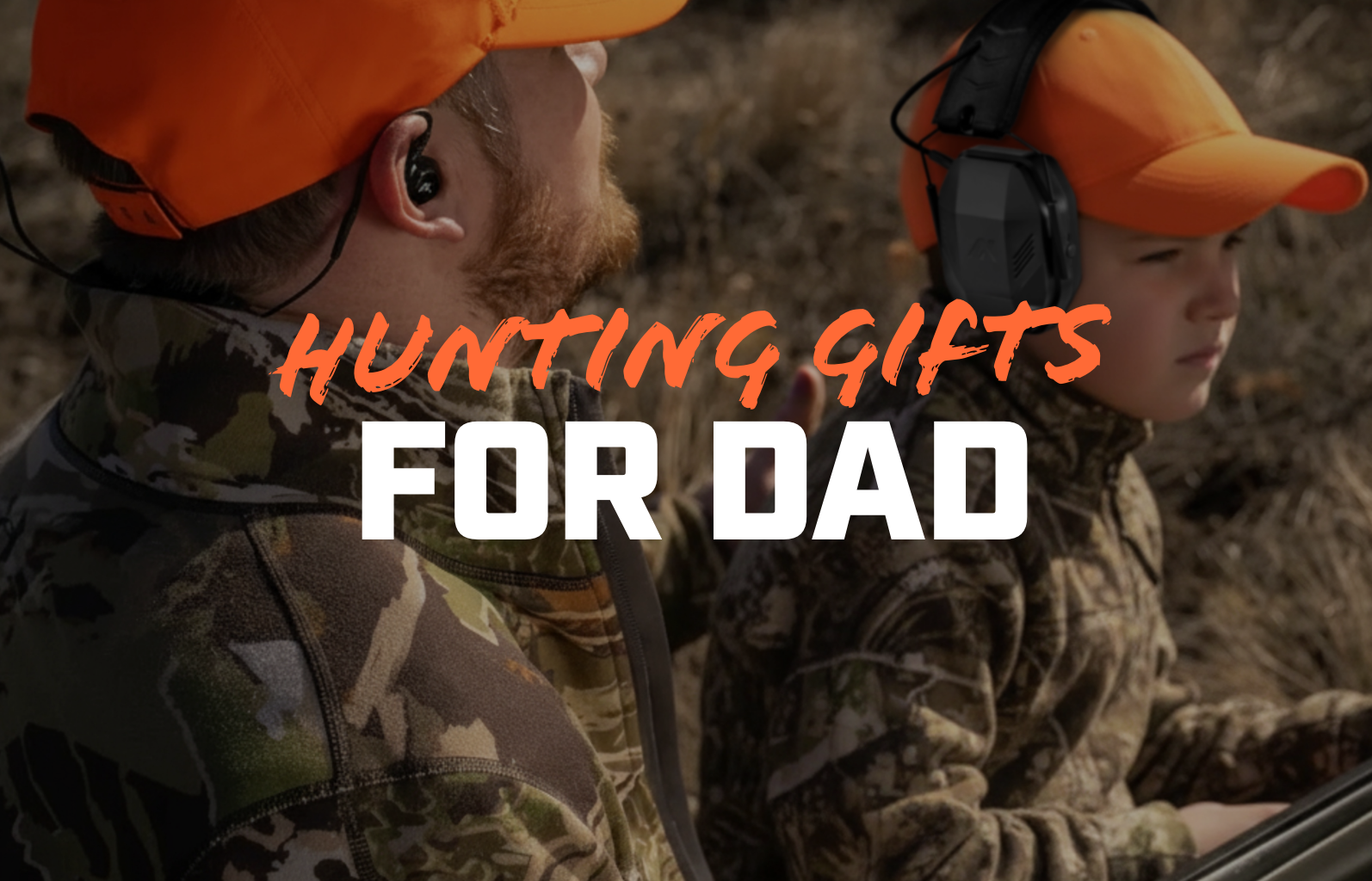Construction sights and heavy machinery are synonymous with loud noises. Most sights require hearing protection and even have signage at entrances with clear instructions to protect your hearing along with hard hat warnings. Even a simple hammer strike has been recorded reaching dB as high as 148. Because of the repetitive noise and prolonged exposure to loud environments such as construction sites, many workers in the industry end up suffering from hearing loss. Because of this, similar to hunters and sportsmen with firearms, choosing and wearing quality hearing protection is an imperative part of working at and being around construction sites. The longer the exposure, the more potential long-term damage can occur, making keeping hearing protection around at all times a top priority.
Understanding Noise-Induced Hearing Loss (NIHL) in Construction
Noise-induced hearing loss is a progressive condition caused by long periods of exposure to hazardous noise levels like that which would be common on a construction site from power tools such as jackhammers, chainsaws, drills, blowers, and other loud machinery. NIHL unfortunately is irreversible and ultimately leads to tinnitus and permanent hearing impairment. However, by taking the simple precaution of wearing quality hearing protection, a construction worker can easily protect themselves from the consistent barrage of high counts of decibels (dB) common in many workplaces.
Identifying Key Sources of Construction Noise
The Role of Power Tools and Heavy Machinery
Long periods exposed to power tools on construction sites are usually the main contributor to hazardous noise levels. These include a variety of tools that keep that average level of decibels between 110 dB and 120 dB on most construction sites. That being said, the loudest sound measured on most sites is drilling which easily can exceed a prolonged noise level of between 120 dB and 140 dB. Loud work vehicles also create substantially loud noises, such as tractors, backhoes, or excavators. A construction worker also has to contend with loud noises from falling structures and equipment like large stacks of pallets which also can create noise levels above 100 dB.
Comprehensive Strategies for Hearing Conservation
OSHA regulations generally require personal protective equipment (PPE) which constitutes everything from clothing to footwear, helmets, or even masks. These regulations also require any employer to have a written policy that includes testing, record keeping, and training or face potential fines and other punitive measures. Hearing protection such as foam plugs, earmuffs or buds are an essential part of any PPE and are included in many training guides and regulatory policies.
earplugsPersonal Protective Equipment (PPE) for Hearing
Earplugs: Disposable Foam and Silicone Options
Earplugs are an inexpensive and convenient option for workers in a hazardous noise environment and are readily available. Axil foam earplugs are available with or without a lanyard and provide up to 32 dB of protection. Great for workers that move around a lot and may need to take them out when shuffling from a loud noise environment to an office where they need to be able to hear normally. Silicone earplugs are another great option but may be a little more expensive but will have a longer usage life. Noise-canceling and fit easily into the ear canal where they expand snugly, earplugs are the most commonly used PPE hearing protection in loud-noise environments.
Earmuffs: Over-the-Ear Protection
Safety earmuffs provide more options for workers concerning comfort, hygiene, and extended use. The noise reduction rating (NRR) on hearing protection that wraps over the head and ears can vary, but because of ear cushions and an adjustable headband can be safer due to ease of use and more comfort.
passiveGreat for extended wear, the Axil Trackr Passive is designed for maximum protection and comfort. Brands like Peltor and Howard Leight have also manufactured earmuffs for hazardous noise environments, although without the same technology and specialization. The convenience of being able to quickly take off and put on earmuffs is also a huge benefit to a worker who finds themselves rotating between office work in a trailer and also on the site near machinery and other loud noises.
Advanced Hearing Protection Solutions
Electronic Earmuffs and Bluetooth Connectivity
Noise-canceling headphones with Bluetooth capability are becoming a much more common sight on construction sites where being able to communicate and stay connected can be just as important as protecting hearing. Earmuffs like 3m WorkTunes which protects up to 24 dB or the Axil Trackr Blu which protects up to 27 dB provide a high level of protection and ergonomics and also connect to a phone or other devices via Bluetooth as well as enhance hearing and directional and spatial awareness. With sound quality that is comparable or superior to popular music devices and battery life that allows for prolonged usage, electronic earmuffs will continue to become more popular with construction workers and other professionals who work in a loud-noise environment.
bluCustom Molded Earplugs: Personalized Protection
Custom molded earplugs are designed for a perfect fit for a specific ear, versus a general or adjustable fit. In-ear, perfect fit earplugs made of soft foam are a little more intensive in that they are designed for a specific user. This requires an audiologist or other expert to take an impression of the ear before manufacture. However, they are optimal for noisy environments because every ear is different and has a slightly different fit. Many musicians who perform nightly in high-sound level venues are known to use custom molded ear plugs due to the high fidelity features and the necessity of being able to hear their output while also delivering clear sound to a huge crowd.
Implementing Hearing Conservation Programs
Despite a variety of types of hearing protection available to professionals and the requirement of work sites that hearing protectors be worn, work sites and companies are also required to maintain effective programs for protecting the hearing of workers. Hearing assessments are scheduled regularly and can detect hearing issues early and provide corrective action. The best proactive option however is training, using, and maintaining quality hearing protection equipment as PPE is critical, but just as important is making sure it's being used correctly for optimal results.
xcorConclusion: Prioritizing Hearing Health in Construction
Hearing damage is all too common among workers in many different industries, construction is no exception. Fortunately, high-quality hearing protection that is inexpensive and easy to use helps create a safe work environment with regards to long-term risk to ears. Having the best hearing protection combined with PPE on a well-organized work site with a company that prioritizes worker safety and protection can ensure the reduction of NIHL and minimal long-term effects of exposure to loud noises.












 Accessibility
Accessibility

Share:
Guest Post: Hunting with AXIL ear pro in Africa By John McAdams
The Ultimate Guide to Hunting in April